Spotted Salamander
Ambystoma maculatum
This brightly marked species is easily distinguishable from most of Michigan's salamander species in that is exhibits a dark background with two rows of bright orange or yellow spots down its dorsum. The number of spots may vary greatly among individuals may have few but very distinct spots, while others may have many which are smaller in size. In Michigan, some individuals exhibit orange spots on the head while the spots on the body are much more yellow in coloration. Although it is a common species in Michigan, the Spotted Salamander is not usually observed outside of the breeding season it early spring. At this time of the year, spotted salamanders migrate to temporary woodland pools known as vernal pools to breed.
Migration occurs on warm, rainy nights in late March or early April. Salamander emerge and migrate to vernal pools where males often congregate in huge numbers around a single female and perform a "tail dance" in the water to impress the female. Each male drops several packets of sperm known as a spermatophore which contains all the genetic material to pass on to the next generation.
A female will take a single spermatophore into her cloaca, which fertilizes the eggs which she is carrying. After a day or two the eggs will be fully fertilized and the female will remain in the pool until she lays her eggs. Spotted Salamander females often attach egg masses to twigs, leaf litter, or other material within the vernal pool as the female which is shown below ovidepositing her eggs to some leaf litter.
The larva hatch and spend the majority of the year in the pool until they metamorphose into miniature adults and then head into their terrestrial lifestyle. This species in common in Michigan, but occurs in scattered locations where suitable habitat exists. Get out in the woods on a rainy spring night and you just might glimpse one of these gorgeous salamanders.
Eastern Tiger Salamander
Ambystoma tigrinum
This large and robust salamander is the largest species of terrestrial salamander which occurs in North America, with some adults reaching over a foot in length. It is rarely seen outside of the breeding season, with the exception of the 4-5 inch juveniles which emerge in late summer around breeding sites. Tigers are easily distinguished from any other Michigan salamander by their sheer size, large head and oversized jaw, and the large protruding eyes. Some individuals may exhibit brilliant blotches of golden yellow or light brown, while others are extremely dark with very little noticeable pattern. This species is sexually dimorphic, which means males can be distinguished from females by their physical appearance.
Adult male, exhibiting flat rudder-like tail
Adult female, exhibiting rounded tail
Males have a characteristic vertically flattened, rudder-like tail while adult females exhibit a more rounded, tapered tail. Adults are rarely seen outside of the breeding season which occurs in early to mid March. Tigers are one of the earliest breeding salamanders in Michigan and often enter breeding pools with plenty of remaining ice cover, all that is needed is a few feet of the edges to be thawed. Females and males spend a few days in breeding pools for a few days and that head back underground for the remainder of the year. Metamorphs emerge in late summer and resemble adults but can range from 3-5 inches and are usually dark in coloration.
Smallmouth Salamander
Ambystoma texanum
This small and odd looking species is rarely seen in Michigan. The smallmouth salamander gets its name from its characteristic short, blunt snout which makes it look like it has run head first into a wall. It is a medium sized Ambystomatid that is usually dark or gray in coloration and often has lighter gray flecking, giving it a sometimes "frosted" appearance.
This species reaches its northern range limit in extreme southeast Michigan, unfortunately this is also home to Michigan's population center and is extremely developed. Though this species was probably not very common historically, its breeding habitat has become fragmented and lost and there are now only a handful of breeding populations left. This has given the smallmouth salamander the designation of an Endangered species in Michigan. It is one of the earliest breeding species in Michigan and may be found sharing pools with Eastern Tiger Salamanders. Any sightings of this species should be reported to the Michigan Herp Atlas.
Blue-spotted Salamander
Ambystoma laterale
Probably our most common Mole salamander, the Blue-spotted Salamander is easily distinguished from other Michigan salamander species by its dark color and light blue flecking. Some individuals may closely resemble this species but are actually unisexual hybrids which I will cover later. This species is a denizen of a wide variety of habitats in Michigan which include upland forest, lowland forest, and even the edges of some open fields. However, they are always associated with nearby vernal pools for breeding purposes.
Unlike the spotted salamander, this species does not lay its eggs in large clumps but rather attaches a single egg to cover within a breeding pool. Although eggs may be seen in close proximity to one another, they are never in one large organized clump. Blue-spotted salamanders can be found more readily throughout the year as well. They are usually found under logs, rocks, or other sorts of cover throughout the season and especially a day or two after a rain shower.
This species is common, but salamanders are important environmental indicators due to their sensitivity to chemicals and pollution. Even common species such as the blue-spotted salamander should be reported to the Michigan Herp Atlas.
Unisexual Hybrid Salamander
Ambystoma sp.
What in the hell is this thing? A lot of salamanders in Michigan may look somewhat odd, like a weird blue-spotted salamander that seems to share characteristics with other species of Mole salamander. The identity of these oddballs is one of great complexity and many biological questions. This is a unisexual hybrid salamander, an all female complex consisting of five parent species of Mole salamander which include A. laterale, A. texanum, A. barbouri, A. tigrinum, and A. jeffersonianum. This unique group of salamanders utilizes a breeding strategy known as kleptogenesis, a method of reproduction whereby a female ‘steals’ sperm from a sympatric sexual male. The sperm is required to stimulate an egg to divide (gynogenesis) but does not fertilize the egg and may or may not contribute chromosomes to the offspring. This unique form of reproduction is thought to have originated about 5 million years ago within this unique group of salamanders.
Because of their unique mode of reproduction, individuals often have more sets of chromosomes than usual. Unisexuals can be triploid (three sets), tetraploid (four sets), or even pentaploid (five sets). This occurs because of the female "stealing" genetic material from males of sexual species it shares breeding ponds with, however sperm genomes are often discarded and thus the resulting reproduction is asexual. Occasionally the sperm genome is used and passed on to the offspring. This complex mode of reproduction can result in over 20 different genomic combinations among the five contributing species. Most animals in Michigan are LLJ (laterale, laterale, jeffersonianum) or LJJ (laterale, jeffersonianum, jeffersonianum) but some may be tetraploid or pentaploid. It should be noted that the latter do not seem to do well in the wild, likely do to the unusually high amount of chromosomes.
Most individuals in this group are triploid, which begs an important evolutionary question; why? There would have to be an advantage to these individuals over diploid, tetraploid, or pentaploid individuals for there to be such an abundance of this biotype over the others. Other interesting questions are also at hand, unisexuals usually share breeding ponds with contributing species but in some cases they are only found in breeding pools with the Spotted Salamander (Ambystoma maculatum). No unisexual has ever been recorded to contain genetic material from A. maculatum and unisexuals often lay infertile egg masses. Are these infertile eggs the result of the inability of the unisexuals to utilize the maculatum genome, or are the unisexuals simply using the sperm of male spotted salamanders do initiate cloning? These any many other questions are important to better understanding the origins of this unisexual complex and their presence in the Great Lakes region in the future.

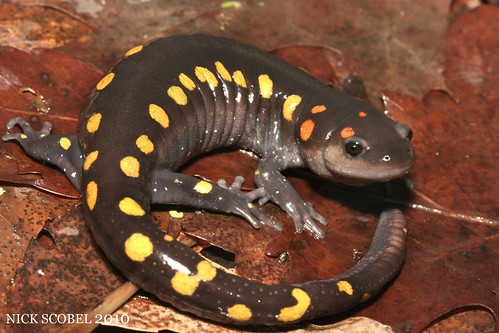

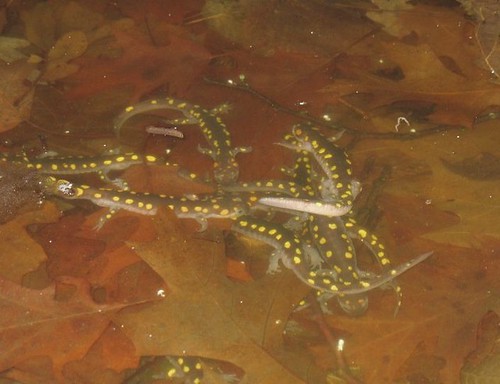
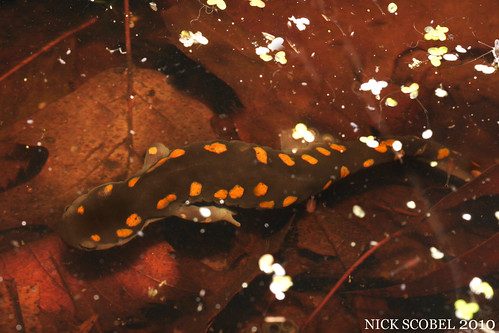




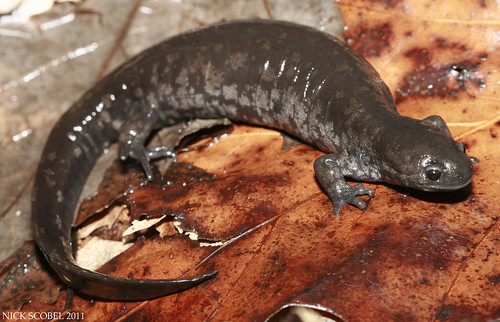
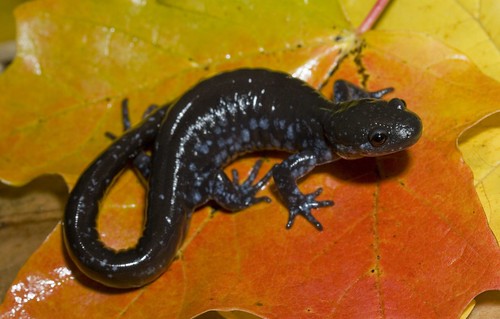

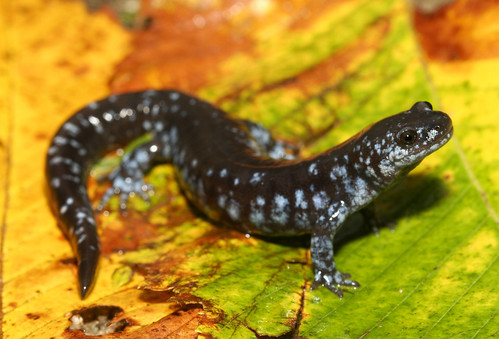
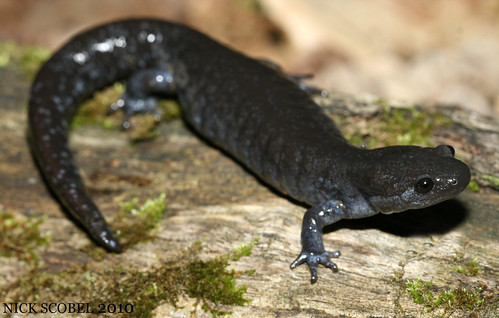
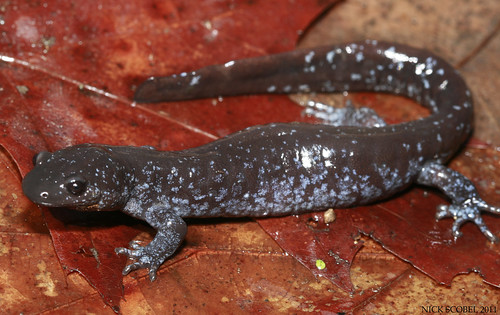
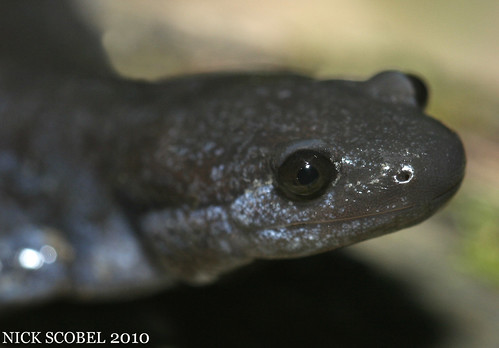
Hi Nick, I found an Eastern in my basement just now. Thank you for your photos, it helped me figure out what it was. I live in Iowa (in the country, near junction of the Iowa and Cedar Rivers... and was wondering if it would survive if I put it outside today? I don't want to leave it in the basement because I put mouse bait down there and read salamanders eat baby mice.
ReplyDeleteWe have seen several of the yellow spotted salamanders this year in northwestern berrien county near the lake Michigan shoreline and have spotted baby offspring on October 19 2018
ReplyDelete